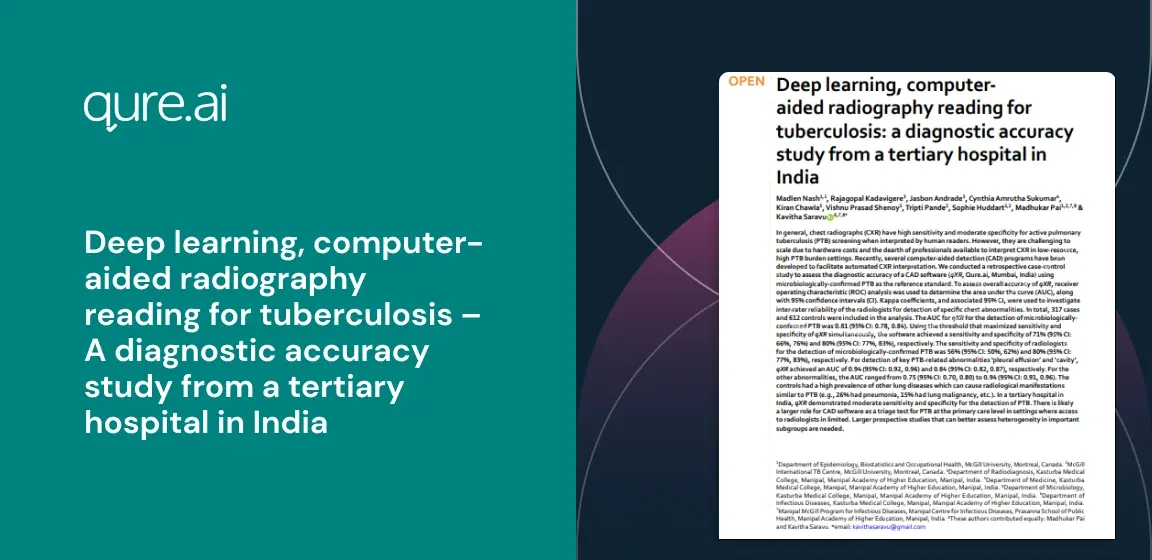Published 13 Jan 2020
Deep learning, computer-aided radiography reading for tuberculosis – A diagnostic accuracy study from a tertiary hospital in India

Back
Authors
Madlen Nash 1, 2, Rajagopal Kadavigere' 3, Jasbon Andrade 3, Cynthia Amrutha Sukumar 4, Kiran Chawla 5, Vishnu Prasad Shenoy 5, Tripti Pande 2, Sophie Huddart 1, 2, Madhukar Pai 1, 2, 7, Kavitha Saravu 6, 71
Citation
1. Department of Epidemiology 2. Biostatistics and Occupational Health 3. McGill University 4. Montreal 5. Canada 6. McGill International TB Centre 7. McGill University 8. Montreal 9. Canada 10. Department of Radiodiagnosis 11. Kasturba Medical College 12. Manipal 13. Manipal Academy of Higher Education 14. Manipal 15. India 16. Department of Medicine 17. Kasturba Medical College 18. Manipal 19. Manipal Academy of Higher Education 20. Manipal 21. India 22. Department of Microbiology 23. Kasturba Medical College 24. Manipal 25. Manipal Academy of Higher Education 26. Manipal 27. India - - Department of Infectious Diseases 28. Kasturba Medical College 29. Manipal 30. Manipal Academy of Higher Education 31. Manipal 32. India 33. Manipal McGill Program for Infectious Diseases 34. Manipal Centre for Infectious Diseases 35. Prasanna School of Public Health 36. Manipal Academy of Higher Education 37. Manipal 38. India